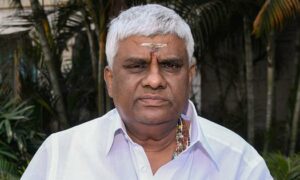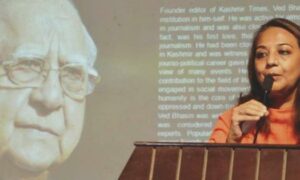
In 2017, a study in the Nature journal showed that the highest number of papers published in dubious “predatory journals” came from Indian academics.
Publishing research papers is an essential requirement for academic advancement. But while legitimate journals follow rigorous processes, predatory journals charge authors money to publish their articles without credible peer review, accepting almost anything that is submitted to them.
The reason Indian academics submit articles to these journalists reflects three intertwined systemic and structural problems: the “publish or perish” culture of academia, the lack of resources in public universities and inequitable access to academic networks, mentorship and training shaped by caste and class.
Bypassing scrutiny
Academic journals are the primary platform where new knowledge is produced, debated and scrutinised within academia. For researchers, publications determine hiring, promotions and funding. Articles submitted to reputable journals undergo peer review, where experts assess the research’s quality and relevance.
Publishing in such journals signals that one’s work meets the standards of the discipline and contributes meaningfully to scholarship.
But predatory journals bypass this scrutiny and publish anything for a fee, undermining academic integrity and devaluing research.
In 2018, the University Grants Commission introduced the UGC-CARE list to identify legitimate journals and discourage predatory publishing. But in October 2024, the commission scrapped this list, arguing that it over-centralised decisions and neglected regional language journals.
Instead, India’s higher education institutions were asked to design their own mechanisms to assess journal quality.
Critics argue that this opens further pathways for predatory journals to flourish. It also increases the risk of sub-standard academics entering faculty positions through politically motivated appointments.
Despite these dangers, researchers continue to publish in predatory journals.
‘Publish or perish’ culture
Publication metrics have become a prerequisite for academic survival. With more scholars entering PhD programmes each year, the competition for jobs is intense. Permanent faculty positions are becoming increasingly limited and being replaced by short contractual roles, making publications essential for mobility and security in an increasingly unstable academic job market in India.
In addition, many universities require PhD students to publish before receiving their degree; University Grants Commission rules mandate at least two publications. Publishing in reputed, peer-reviewed journals takes time. In social sciences, the gap between submission and publication in a top-ranked journal can even exceed two years).
Early career scholars facing time-bound deadlines to finish PhDs or be competitive on job applications often resort to predatory journals because they offer quick turnaround and guaranteed acceptance.
Privatisation in higher education intensifies this pressure. Faculty contracts and promotions increasingly depend on attracting research grants that are tied to quantitative publishing metrics such as “h-index” and “API scores”.
This intense pressure to publish has given rise to the buzz-phrase “publish or perish” in academia. In a resource limited country like India, where public funding in higher education is being reduced, “publish or perish” culture does more harm than good, directing early career scholars and professors to publish in predatory journals.
Scarce resources
India has more than 450 public universities, most offering PhD programmes.
Eighty one percent of students in higher education are enrolled in state public universities, said a NITI Aayog report in February titled Expanding Quality Higher Education Through State Public Universities.
Yet 40% of faculty positions in these universities are vacant, and only 10% have well-equipped research facilities or labs. Governments have opened new universities or upgraded existing colleges without ensuring adequate infrastructure.
The total number of universities in India has nearly doubled from 764 in 2014 to 1,338 in 2025, but many exist only on paper, operating from temporary campuses with poor infrastructure and dismal faculty-student ratios.
PhD research suffers directly from this infrastructural collapse. Labs in many universities are either outdated or non-functional. Coupled with this, Indian researchers also encounter the problem of carrying out research with abysmally low scholarship funding.
Only 2%-3% of PhD scholars in India receive fellowships of Rs 35,000 or above. Scholarship payments are often delayed by several months, sometimes a year, forcing scholars to take jobs to survive. Managing a full-time job alongside PhD research inevitably affects the quality of research and writing.
There is also a wide gap between the prestigious institutions and state universities in terms of access to study materials needed for research. Most reputed journals and academic books exist behind pay-walls, meaning that the university library needs to buy a subscription for them to be available to the students.
While elite higher education institutions in India and the West have the best and the most expensive subscriptions, alongside well-equipped libraries, scholars in state public universities cannot afford to have such access for a lack of funding.
Publishing in a journal does not occur in a vacuum – scholars need to devote a considerable time doing serious academic research. When scholars are underpaid, under-resourced and overworked, publishing in predatory journals is an unavoidable outcome.
The role of networks
The inequalities in Indian academia mirror the inequalities of Indian society. The academic universe runs on networks – mentorships, co-authorships of research papers, referrals and access to the social capital of influential professors. Scholars who co-author articles with the renowned professors, for instance, are likely to get published faster than a researcher without such co-authorship.
Despite offering the illusion of meritocracy, these networks are deeply shaped by the caste and class location of the researchers and academics.
A University Grants Commission report in 2023 pointed out that nearly 30% of the faculty positions reserved for the scheduled castes/scheduled tribes/other backward classes categories were vacant. An article in Nature by Ankur Paliwal points out that 98% of professors and 90% of assistant professors in the prestigious Indian Institutes of Technology, Indian Institutes of Management and Indian Institutes of Science Education and Research belong to upper-caste groups.
Similarly, less than 10% of the PhD scholars in the top Indian Institutes of Technology were Dalits.
In India, caste and economic location often intersect, which in turn shapes access to English – the dominant academic language – a command over which is important for authoring journal articles. Knowing the acceptable language and technical jargon also shapes the way in which scholars can network with their peers and established academics.
Students from elite English-medium schools arrive in universities with writing skills and cultural capital. Marginalised scholars spend years catching up, often with no institutional support. Only a few elite private universities have “writing centres” that provide support and training in academic writing. For most scholars in public universities, learning to write academically becomes a solitary, exhausting task.
Quality research is possible only when every scholar has resources, support, and fair opportunities. The crisis of predatory journal publication can only be resolved through structural reforms, reduced academic nepotism, better representation and higher public investment in education to improve publication standards and the quality of research.
Tridib Mukherjee is a writing tutor at the Centre for Writing and Communication, Ashoka University and a PhD scholar at the Indian Institute of Technology Guwahati.
📰 Crime Today News is proudly sponsored by DRYFRUIT & CO – A Brand by eFabby Global LLC
Design & Developed by Yes Mom Hosting






